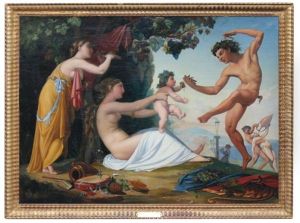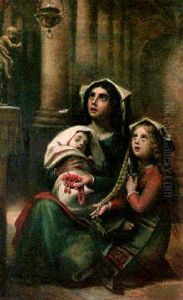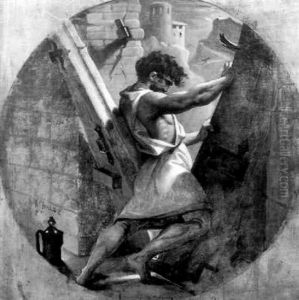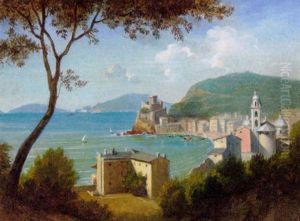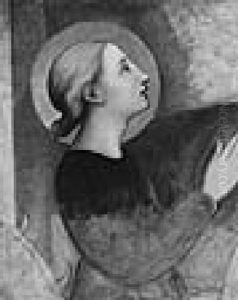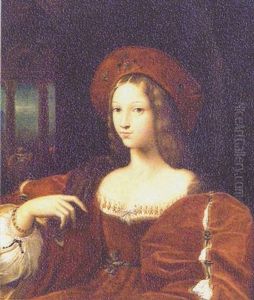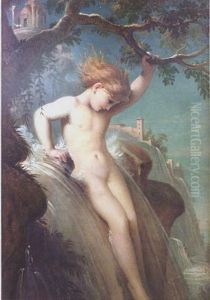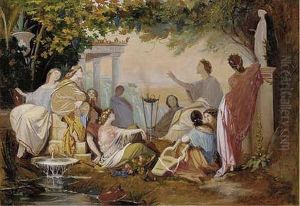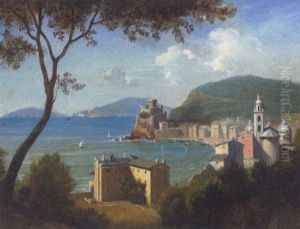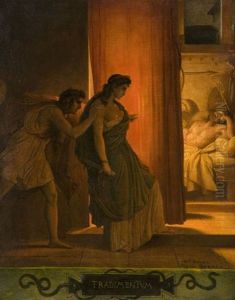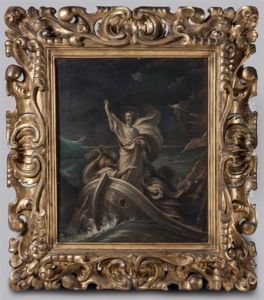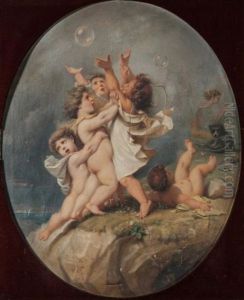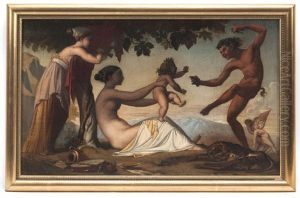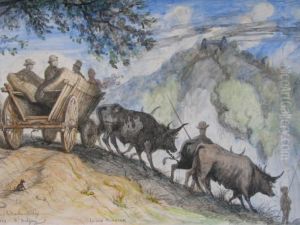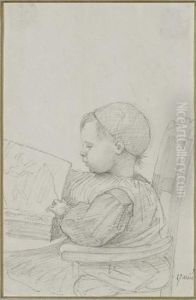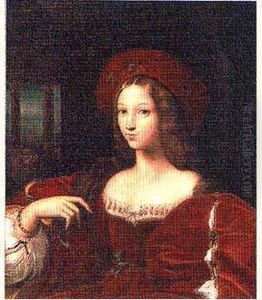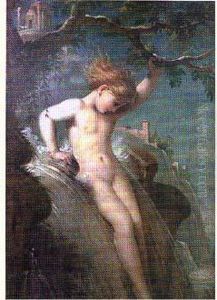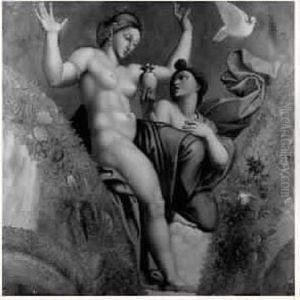Raymond Balze Paintings
Raymond Balze was a French artist known primarily for his work as a fresco painter, born on October 4, 1818, in Rome, Italy. He was the son of a French official at the Napoleonic court and grew up in an environment that was steeped in classical art and Renaissance culture. This early exposure to the arts profoundly influenced his future career. Despite being born in Italy, Balze's French heritage played a significant role in his artistic identity and the trajectory of his career.
Balze began his formal art education at a young age, studying under his elder brother, François Balze, who was also a painter. Later, he became a pupil of the renowned French artist Ingres, who was known for his neoclassical style and precise draftsmanship. Balze's training under Ingres had a lasting impact on his artistic development, as he adopted a similar approach to form and composition.
Throughout his career, Balze worked on numerous commissions for frescoes in various public and private buildings. His work is characterized by its classical style, which was in keeping with the neoclassical and Romantic movements that were popular in France during the 19th century. Balze's frescoes and paintings often depicted historical and mythological subjects, executed with a strong sense of line and clarity of form.
Balze's contributions to art were not limited to his own creations. He also worked on the restoration of Renaissance frescoes, including those in the Vatican's Raphael Rooms. His work as a restorer helped to preserve important works of art for future generations.
Despite his accomplishments, Raymond Balze is less well-known than some of his contemporaries. This is partly because fresco painting, as a medium, became less fashionable over time, overshadowed by the rise of easel painting and other forms of artistic expression. Nevertheless, Balze's work remains a testament to the skill and dedication of 19th-century fresco painters.
Raymond Balze passed away on March 14, 1909, leaving behind a legacy of art that is appreciated by connoisseurs and historians for its adherence to classical techniques and beauty. While not a household name, his contributions to the art of fresco painting during the 19th century continue to be recognized by those familiar with the period.
